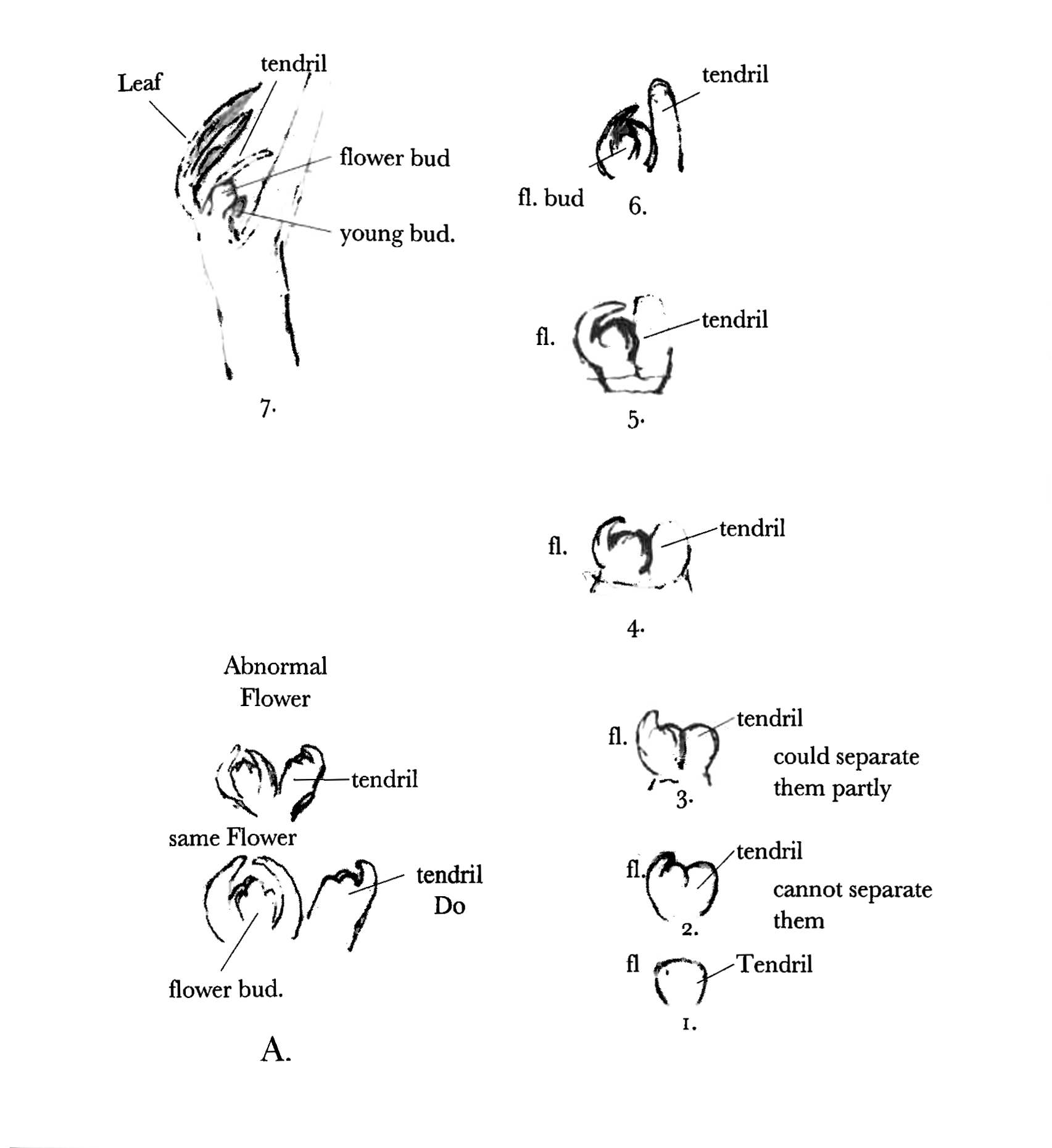To Daniel Oliver 11 March [1864]1
Down Bromley | Kent.
Mar 11
My dear Oliver—
Will you be so kind as to give me your opinion on the following point? I was so much struck with the corresponding position of tendril & flower stalk in Passiflora that I got my son William2 (who can dissect under a & can draw) to examine these parts in their earliest stages. In the enclosed drawing (which please to return) you will see Fig. 1 the tendril & flower bud apparently quite confluent which seems odd.3 From Fig. 2. to 7 you will see the gradation. The sort of horn to the left is the outer division of the involuca which in the early stages is the most developed.4 In one single case of an old bud Fig. A my son found the top of the tendril absolutely like a flower bud in an early stage as in Fig. 3 or 4.5
Does not this render it highly probable that the tendril is a modified flower with its peduncle?6 I presume that a flower wd be called by you an axillary part??7 & that in the vine the tendril might be considered a modified flower peduncle as I now see Lindley maintains that it is.8
It wd I have reason to think be a considerable relief to me, if I might view such tendrils as modified flower stalks instead of modified branches9
Pray tell me is there any essential distinction between the peduncle & mid rib of a leaf, & a branch? for does not a leaf some times produce buds?10
It wd a great kindness if some day you wd look at the plants of Tecoma Radicans & observe if the branches spirally twine—11 I suppose they do not—
Also wd ⟨y⟩ou look at Tecoma Undulata & Capensis— How can they climb? Do they twine or do they emit rootlets like T. Radicans? My plants tho’ 4 ft. high shew no signs of climbing.12 I am much interested about the Genus Tecoma.
Believe me dear Oliver | yours very sincerely | Ch. Darwin
[Enclosure 1]

Passiflora floribunda13
[Enclosure 2]
Passionflower
floribunda
tendrils appear on different sides of flower, but in same branch on the same side.
Footnotes
Bibliography
‘Climbing plants’: On the movements and habits of climbing plants. By Charles Darwin. [Read 2 February 1865.] Journal of the Linnean Society (Botany) 9 (1867): 1–118.
Correspondence: The correspondence of Charles Darwin. Edited by Frederick Burkhardt et al. 29 vols to date. Cambridge: Cambridge University Press. 1985–.
Lindley, John. 1853. The vegetable kingdom; or, the structure, classification, and uses of plants, illustrated upon the natural system. 3d edition with corrections and additional genera. London: Bradbury & Evans.
Summary
Struck with corresponding positions of tendrils and flower-stalks in Passiflora. Sends [W. E. Darwin’s] dissection drawings of earliest stages. Infers that tendril is a modified flower peduncle.
Requests DO look at mode of climbing in Tecoma.
Letter details
- Letter no.
- DCP-LETT-4424
- From
- Charles Robert Darwin
- To
- Daniel Oliver
- Sent from
- Down
- Source of text
- DAR 157.2: 69–70; DAR 261.10: 40 (EH 88206023)
- Physical description
- LS 6pp †
Please cite as
Darwin Correspondence Project, “Letter no. 4424,” accessed on 26 November 2024, https://www.darwinproject.ac.uk/letter/?docId=letters/DCP-LETT-4424.xml
Also published in The Correspondence of Charles Darwin, vol. 12


